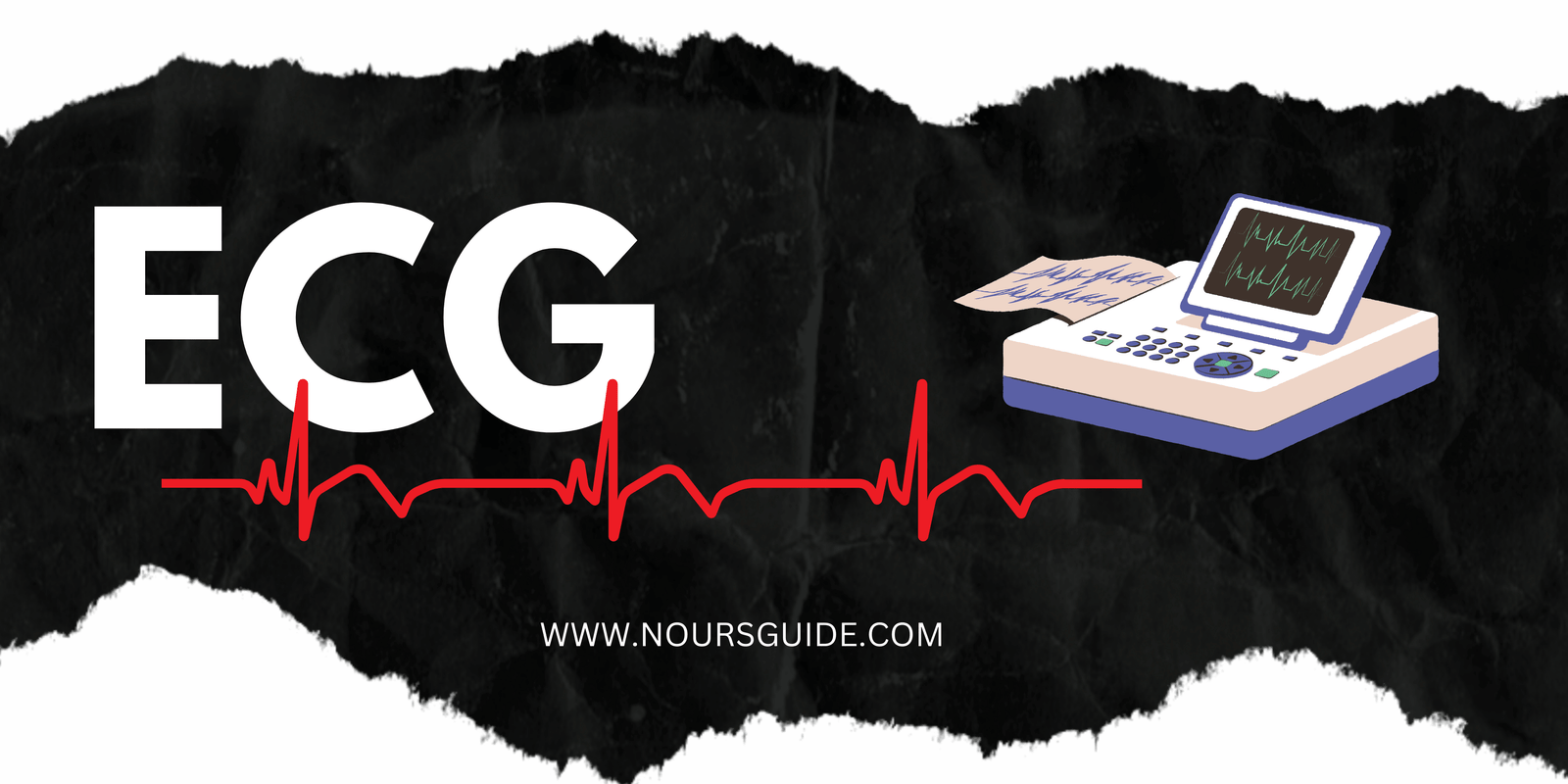ECG Learning Made Easy: Comprhensive Guide6 min read
Intro: What Is ECG
Electrocardiography (ECG) or Elektrokardiogramm(EKG) in German spelling. is a diagnostic tool that records the electrical activity of the heart over time, providing crucial insights into its function and health. This non-invasive procedure captures the electrical impulses that trigger heartbeats, allowing healthcare professionals to assess heart rhythm, detect abnormalities, and diagnose various cardiac conditions.
This simple definition should be a good start.
II. Basics of ECG:
A. Anatomy of the Heart:
It is essential to review the anatomy of the heart at the beginning. Here is the best video for the review.
Heart Special action potential:
Here is a video explaining the differences between the action potential of the heart and other muscles. Understanding these distinctions is crucial for a comprehensive grasp of cardiac physiology.
Heart conduction :
ECG Leads
Now, after reviewing the basic anatomy, it’s time to learn about the leads. This includes understanding the principles of electrical waves, identifying when they are positive or negative, and recognizing depolarization and repolarization.
- Limb leads
- Precordial leads
- Lead placement and orientation
ECG lead placement is crucial for monitoring the heart’s electrical activity. The standard 12-lead ECG includes six limb leads and six precordial leads. The limb leads are I, II, III, aVR, aVL, and aVF. They provide a view of the heart’s activity in the frontal plane.
Lead I measures the potential difference between the left and right arms. It primarily reflects lateral wall activity. Lead II captures the electrical activity from the right arm to the left leg. This lead provides insights into the inferior wall.
Lead III measures the difference between the left arm and left leg. It also reflects inferior wall activity. The augmented leads offer additional perspectives. aVR focuses on the right side of the heart. aVL looks at the left lateral wall, while aVF assesses the inferior wall.
The precordial leads, V1 to V6, are placed across the chest. They provide a horizontal view of the heart. V1 and V2 mainly assess the right ventricle and septal area. V3 and V4 focus on the anterior wall. V5 and V6 evaluate the left lateral wall.
Together, these leads create a comprehensive map of the heart’s electrical activity. This mapping aids in diagnosing various cardiac conditions.
ECG Waveforms:
It is important to understand the normal physiology before studying abnormalities. Begin by learning about each wave on each lead and its corresponding part of the heart. Memorize the length and height of each wave and segment, and then proceed to study abnormal cases.
Common ECG Abnormalities
A. Arrhythmias
B. Myocardial Ischemia and Infarction
C. Electrolyte Imbalances
D. Conduction Abnormalities
1. AV block (1st, 2nd, 3rd degree)
Clinical Correlation
A. Case Studies
2. ECGs with common abnormalities
B. Integration with Clinical Symptoms
1. Correlating ECG findings with patient symptoms
Resources for Further Learning
A. Recommended Textbooks For ECG
Osmosis ECG GUIDE
https://ghscme.ethosce.com/sites/default/files/Basic%20ECG%20Interpretation%20-%20Leonard.pdf
https://pre-med.jumedicine.com/wp-content/uploads/sites/7/2020/10/The-ECG-Made-Easy-9th-Edition.pdf
https://ecg.utah.edu/pdf/Introduction-to-ECG-Interpretation-January-2023.pdf
ECG Apps and Software
https://play.google.com/store/apps/details?id=com.studyspring.ecg.ecgbasics.ecglearning.ekg&hl=en_US
Top ECG Quizes:
https://www.practicalclinicalskills.com/ecg
https://www.practicalclinicalskills.com/ecg-graded-quiz-introduction
FAQ Section: Learning ECG
Why is ECG important in clinical practice?
ECG is crucial for diagnosing various heart conditions, assessing heart health, monitoring the effects of medications, and guiding treatment decisions.
What are the main components of an ECG waveform?
The main components include the P wave (atrial depolarization), QRS complex (ventricular depolarization), and T wave (ventricular repolarization).
How do I calculate the heart rate from an ECG?
To calculate the heart rate, count the number of R waves in a 6-second strip and multiply by 10, or use the formula 300 divided by the number of large squares between R waves.
What are some common ECG abnormalities?
Common abnormalities include arrhythmias (like atrial fibrillation), myocardial ischemia (ST elevation or depression), and conduction blocks (like AV block).
How can I practice interpreting ECGs?
You can practice by reviewing case studies, using ECG simulators, and analyzing ECG strips from textbooks or online resources.
How can I improve my ECG interpretation skills?
Regular practice, studying various case scenarios, attending workshops, and engaging with experienced clinicians can significantly enhance your ECG interpretation skills.




